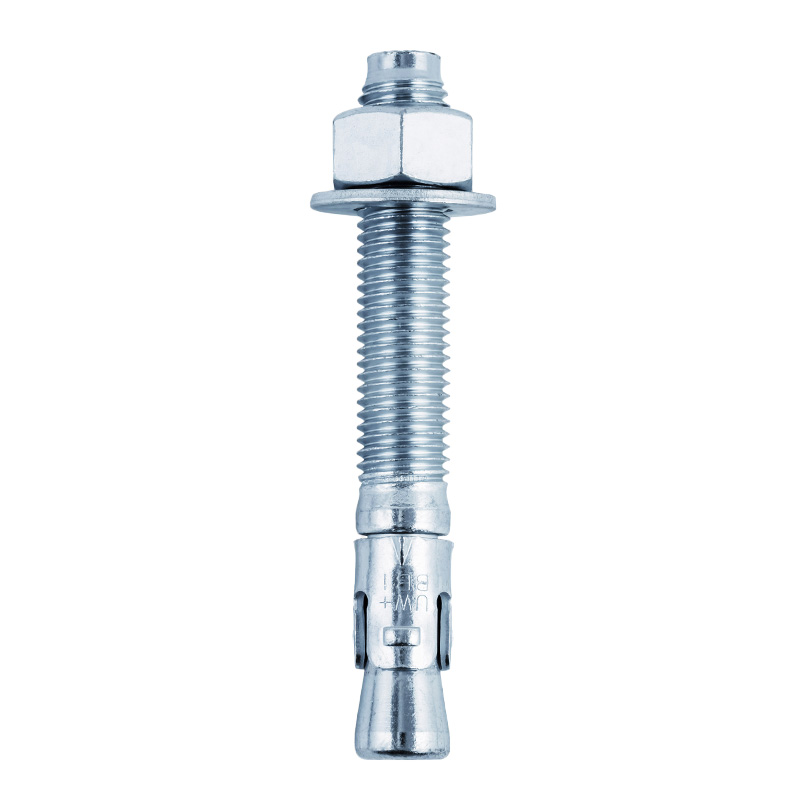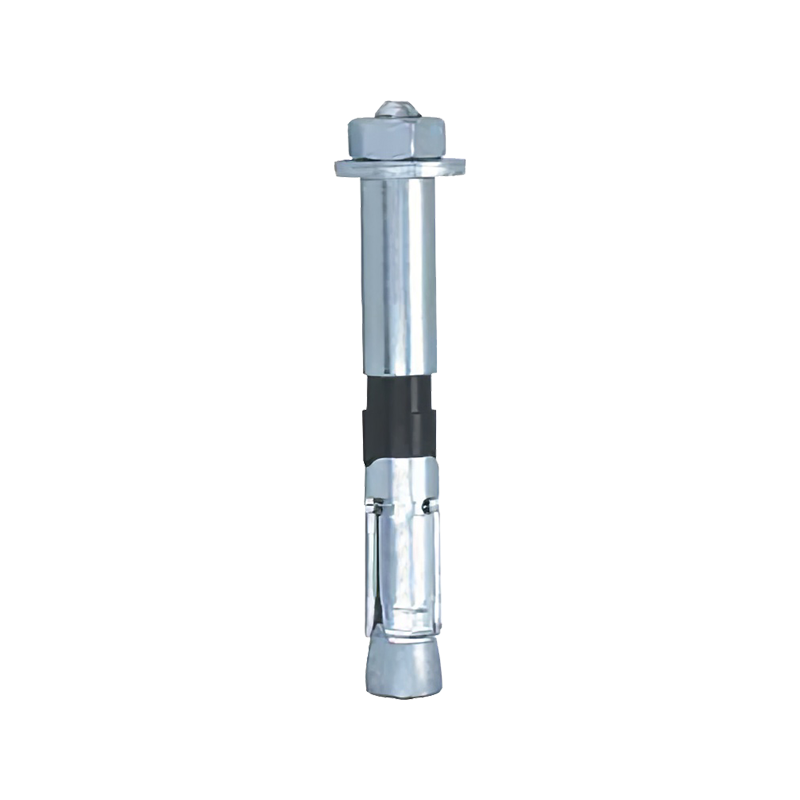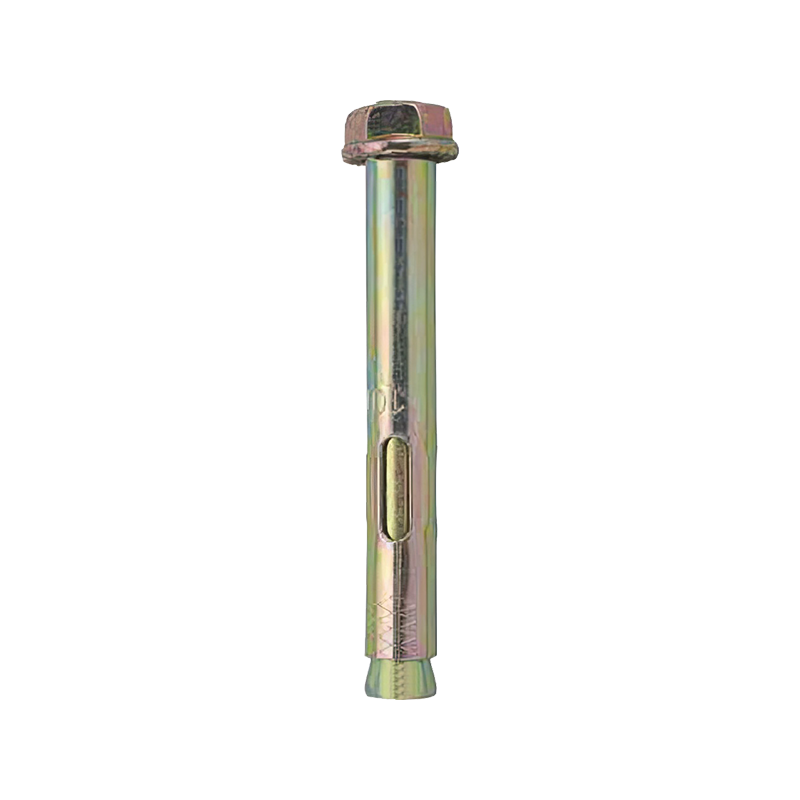What are some common materials used in manufacturing single expansion anchors
2025-11-03I. Carbon Steel: The Widely Used Foundation
Carbon steel is the most common material used in the manufacturing of single expansion anchors. Its primary advantages lie in its high cost-effectiveness and robust mechanical strength.
1. Material Properties and Grades
The carbon steel used for anchors is typically low-carbon steel, chosen for its excellent cold-working properties, which facilitate stretching and forming. Standard anchor grades specify the required yield and tensile strengths. For example, some industry standards mandate that the anchor rod material meets performance requirements similar to 4.6, 5.8, or even 8.8 grade bolts. This ensures the material provides sufficient tensile strength to resist external loads while maintaining adequate ductility to prevent brittle fracture under stress.
2. Surface Treatment: The Corrosion Barrier
Pure carbon steel is highly susceptible to rust in moist environments, necessitating specialized surface treatments.
-
Electro-plated Zinc (Electro-galvanized): This is the most common anti-corrosion treatment for carbon steel anchors. It forms a thin layer of zinc on the anchor surface through an electrochemical process. The advantage of electro-plating is its smooth finish, uniform coating, and low cost. However, the coating thickness is typically only 5-25 micrometers, offering medium-level corrosion resistance. It is suitable for dry or indoor environments.
-
Hot-dip Galvanized (HDG): This process involves immersing the anchor in molten zinc, creating a thicker layer of zinc-iron alloy and pure zinc. HDG coatings are usually 45 micrometers thick or more, providing superior weather resistance and corrosion protection. HDG anchors are ideal for damp outdoor or light industrial environments. Note that the heavy HDG coating might slightly affect thread fit precision, but professional manufacturers employ post-treatment to ensure smooth installation.
II. Stainless Steel: The Ultimate Defense in High-Corrosion Environments
Stainless steel is the material of choice for severe conditions. It achieves exceptional corrosion resistance by adding chromium to the iron alloy, which forms a dense chromium oxide passive film on the surface. Although more costly than carbon steel, stainless steel is the only safe option in certain critical applications.
1. Grade Selection: Professional Differentiation
Different stainless steel grades determine the level of corrosion resistance. The most common selections in the anchor industry are:
-
A2 Grade (AISI 304/304L): Contains 18% chromium and 8% nickel, providing good general corrosion resistance. It is widely used for general outdoor, urban environments, and non-chlorinated water contact applications. It effectively resists general atmospheric corrosion, water, and certain weak acids and bases.
-
A4 Grade (AISI 316/316L): This grade adds the element Molybdenum to the 304 composition. The addition of molybdenum significantly enhances the steel’s resistance to chloride corrosion, specifically pitting and crevice corrosion. A4 stainless steel is the standard choice for marine environments, swimming pool areas, chemical plants, or harsh settings involving de-icing salts. For structures requiring long-term reliability and facing the threat of salt spray and chloride ions, A4 grade is indispensable.
2. Mechanical Performance and Cold Work Hardening
Stainless steel anchors, especially those made from austenitic stainless steel, undergo cold work hardening during manufacturing, which helps enhance their mechanical strength. Their strength grade is often marked as A4-70 or A4-80, where the number indicates the minimum tensile strength (e.g., 700 N/mm² or 800 N/mm²). Professional applications must ensure that the stainless steel anchor's mechanical properties meet structural design requirements, not relying solely on its corrosion resistance.
III. Material Considerations for Other Components
The single expansion anchor is not a single-material component; its expansion sleeve, nuts, and washers are equally critical.
1. Expansion Sleeve
The expansion sleeve is the crucial component that facilitates anchoring, often made from the same carbon steel or stainless steel as the stud. However, to ensure it expands uniformly and effectively under tension and generates sufficient friction, the sleeve's material hardness and toughness must be carefully controlled and optimized. Some manufacturers use alloy steel or specific heat treatment processes to ensure reliability during the expansion process.
2. Nuts and Washers
Nuts and washers must be compatible with the rod material and surface treatment. If the rod is HDG carbon steel, the nut and washer must also be HDG. If the rod is A4 stainless steel, the nut and washer should also be A4 stainless steel. This material consistency is key to preventing galvanic corrosion. When two dissimilar metals come into contact, this can accelerate the corrosion rate of one metal, jeopardizing the entire anchoring system's lifespan.
IV. Professional Guidelines for Material Selection
Selecting the material for a single expansion anchor must follow these professional principles:
-
Environmental Assessment: Determine if the anchor's environment is dry indoor, humid outdoor, contains chemical substances, or is near a marine setting. This is the primary factor determining the choice between electro-plated, hot-dip galvanized, or stainless steel.
-
Load Requirements: The design tensile and shear loads dictate the material's mechanical strength grade, such as whether a high-strength 8.8 grade rod is required.
-
Service Life: For permanent or safety-critical structures, the A4 stainless steel material offers the highest reliability and longest anticipated lifespan.
A correct understanding and selection of single expansion anchor manufacturing materials is the foundation for ensuring long-term structural safety and economic efficiency. Professional material choice signifies a commitment to engineering quality.












Contact Us